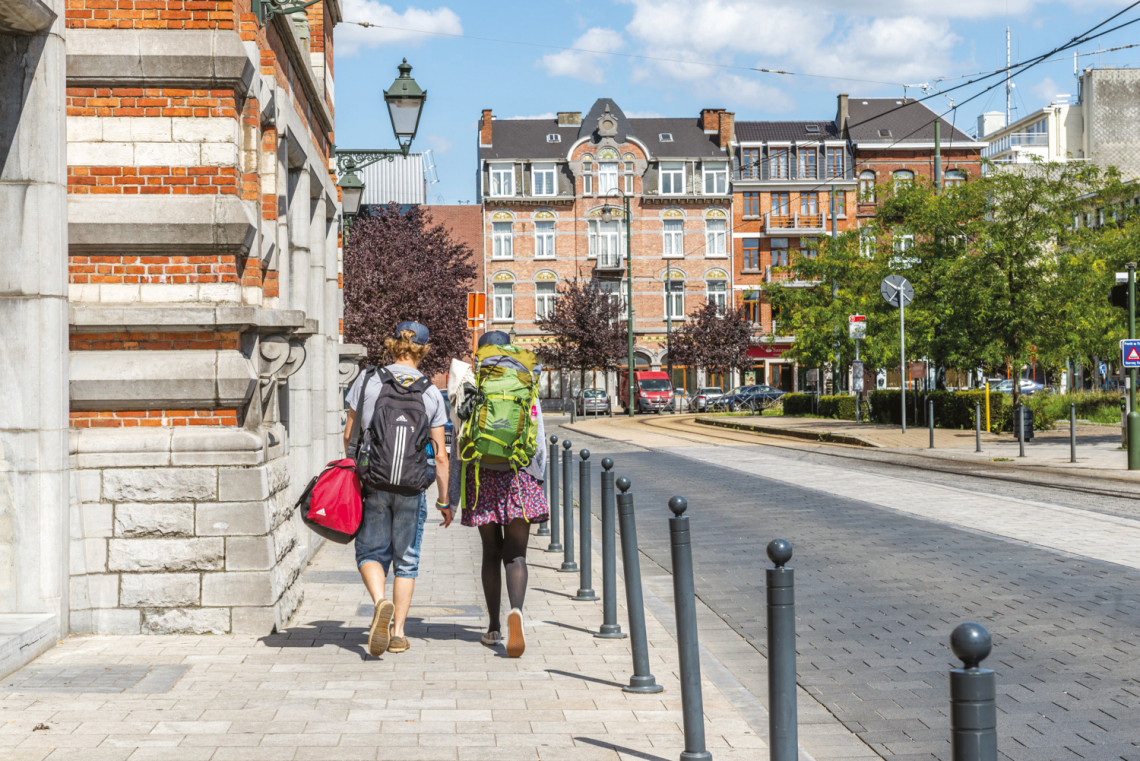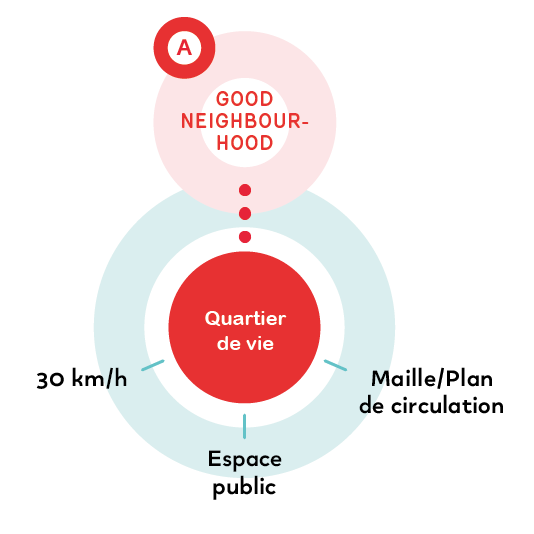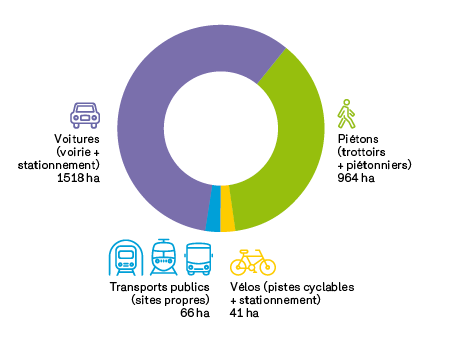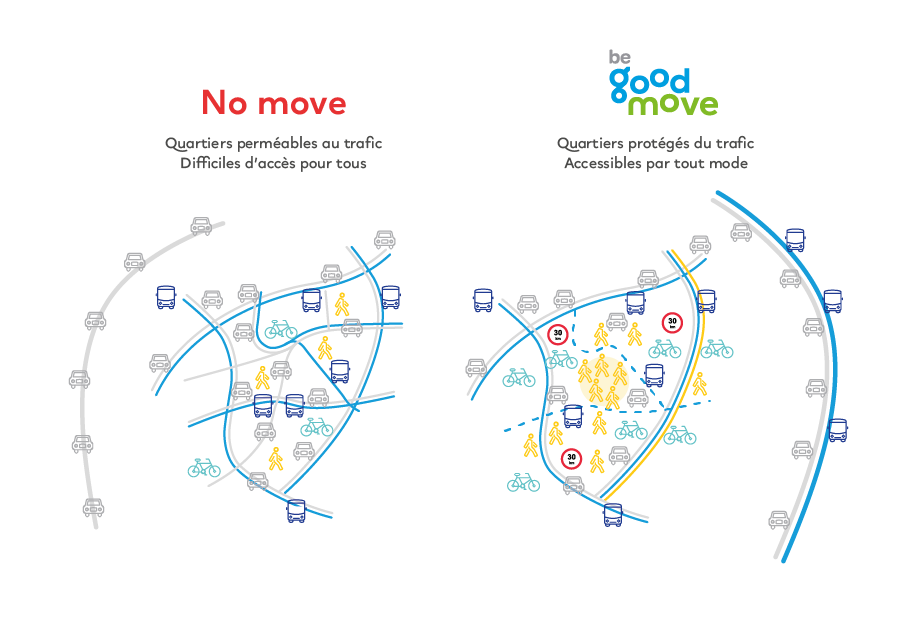

Quality of life is the watchword of Good Move: neighbourhoods that are peaceful, secure, diversified, pleasant to live in and suitable for all generations... To combine local mobility and quality of public space, the Region identifies three components:
-
Introduce the speed limit of 30 kmph by default in the regional territory to restore the local character of streets, reduce accidents and make room for pedestrians and cyclists;
-
Implement traffic plans and links for more peaceful neighbourhoods and offer active modes and public transport large areas that are free from through traffic;
-
Renovate large, iconic public spaces by prioritising the safety and comfort of all citizens who stop there just to enjoy themselves or as part of an organised activity.
The municipalities are key to the implementation of the mobility policy. They already have their Municipal Mobility Plan and now need to update it so that it translates the objectives of the Regional Mobility Plan into practical and operational measures to be implemented at a municipal level.
In addition, the Region is also planning, in general terms, to provide greater support to the municipalities in implementing the MMP, through a new partnership: the local mobility contract.

More info in French or Dutch :
- La feuille de route rues scolaires
- Les guides techniques (vade-mecum…)
- Le Guide de l’espace public bruxellois, ]pyblik[ pour les concepteurs chargés de l’aménagement des espaces publics
- La brochure [ESPACE · PUBLIEK] pour les concepteurs chargés de l’aménagement de rues locales
- Le plan lumière
Brussels, City 30
On 1 January 2021, Brussels has become an urban area where 30 km/h is the general rule rather than the exception.
Why 30 km/h (almost) everywhere?
Every year in the Brussels-Capital Region, 50 people are killed or seriously injured as a result of speeding and inappropriate speeds. The primary objective of the City 30 is therefore to increase the safety of all users: that of pedestrians and cyclists, of course, but also that of the car driver and passengers. In the event of an impact at 30 km/h, the seat belt plays its protective role perfectly.
This measure also makes it possible to ease traffic, particularly in neighbourhoods, and provide more favourable conditions for a modal shift to the development of cycling and walking for short distances.
30 km/h also reduces noise pollution: at 30 km/h, it is like a 50% reduction in traffic in terms of noise levels.
This measure also brings Brussels into line with other cities such as Lille (88% of 30 zones), Paris and Bordeaux (target 85% of 30 zones) which are now following the same approach.
More info: city30.brussels
Local mobility contracts
The local mobility contract is a Region-Municipality partnership scheme established by the Good Move plan which aims to facilitate the creation of "zones", i.e. large, peaceful neighbourhoods, in line with the "City 30" vision (implemented on 1 January 2021 in the Brussels-Capital Region). This measure aims therefore to calm traffic within the zones created and to ensure the quality and safety of all modes of transport, including the smooth circulation of public transport vehicles. Transit traffic will be strongly discouraged in these areas.
A total of 63 zones are eligible in the Brussels-Capital Region. In this first year, ten applications were selected and divided into two packages of five zones for 2020 and 2021, see the breakdown below. The next call for projects will take place at the end of 2021.

